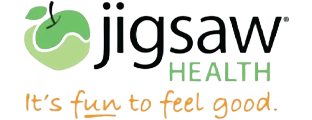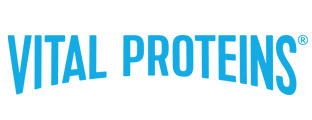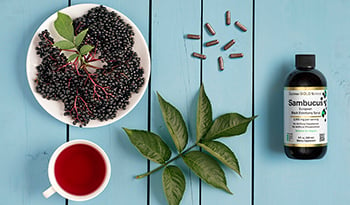Faceți aceste 5 rezoluții simple pentru sănătate și imunitate în acest an

Anul Nou este un moment minunat pentru a stabili intenții pentru lunile viitoare și pentru a face planuri detaliate pentru realizarea lor. În calitate de medic naturopat, știu că este mult mai ușor să-ți atingi obiectivele atunci când sănătatea ta este la punct. Așadar, iată recomandările mele pentru practicile de wellness de implementat în 2021, care vă vor permite să prosperați și să depășiți chiar și cele mai înalte obiective.
În primul rând, începeți cu fundamentele sănătății: somn, mișcare și nutriție. Apoi, construiți-vă pe fundația dvs. cu conexiune, bucurie și încredere.
1. Optimizați-vă somnul
Somnul slab este asociat cu un risc crescut de apariție a unui număr de boli cronice și debilitante, inclusiv boli cardiovasculare, cancer, depresie și chiar scăderea duratei de viață. Somnul inadecvat face, de asemenea, mai greu să te concentrezi, să faci alegeri alimentare bune și să faci exerciții fizice în siguranță, așa că va împiedica atingerea celorlalte rezoluții dacă nu este controlat!
Sfatul meu dacă nu ați dormit bine este să vă angajați să vă oferiți darul unei vieți mai lungi, mai sănătoase și mai vesele, optimizându-vă somnul în acest an. Dacă aveți o tulburare legitimă de somn sau insomnie care vă împiedică să vă odihniți adecvat, consultați medicul pentru teste și tratament specializat. În caz contrar, puteți începe prin a vă angaja să remediați lucrurile care sunt sub controlul dvs. - ora de culcare, igiena somnului și nutriția somnului.
Cel mai bun mod de a rămâne la o oră de culcare obișnuită este să creezi o rutină. Setați o alarmă cu sunete blânde pentru a se declanșa cu aproximativ o oră înainte de a dori să dormiți. Acesta ar trebui să fie indicatorul dvs. pentru a renunța la electronice, să faceți un duș sau o baie cu produse care conțin uleiuri esențiale calmantesau să preparați o oală cu un ceai de plante relaxant.
Păstrați-vă camera cât mai întunecată posibil, oprind toate luminile și electronicele și folosind perdele opace pentru a bloca lumina din exterior. Dacă acest lucru nu este posibil, utilizați o mască de somn pentru a vă asigura că lumina nu ajunge la ochi. Păstrarea camerei cât mai întunecate este importantă pentru a permite corpului tău să-și producă propria melatonină, care este hormonul care spune corpului tău că este timpul să adoarmă și să rămână adormit.
Dacă lucrați de acasă și descoperiți că acest lucru a contribuit la eșecul programului dvs. de somn, consultați articolul Resetarea programului de somn și videoclipul însoțitor pentru mai multe informații despre acest subiect.
2. Verificați-vă nivelul de vitamine
CDC (Centrele pentru Controlul și Prevenirea Bolilor) efectuează în fiecare an un studiu numit The National Health and Nutrition Examination Survey pentru a măsura aportul inadecvat de nutrienți și deficiențele de nutrienți în populația SUA. Și... surpriză! În total, 10% dintre adulții americani au deficit de vitamina B6 și fier. Asta e o mulțime de oameni!
Efectele secundare ale acestor deficiențe includ oboseală, depresie, funcție imună scăzută, erupții cutanate și multe altele. Aveți vreuna dintre acestea? Dacă da, merită să vă gândiți dacă este posibil să aveți un conținut scăzut de nutrienți și să cereți medicului dumneavoastră să vă testeze.
Al doilea raport național privind indicatorii biochimici ai dietei și nutriției în populația SUA a constatat și alte deficiențe comune în populația SUA. Între 8-30% dintre adulții din America sunt deficitari în vitamina D. Șase procente sunt deficitare în vitamina C. Înainte de eforturile de fortificare a folatului de la sfârșitul anilor 1990, o parte semnificativă a populației era, de asemenea, deficitară în folat.
Nimeni altcineva nu se poate asigura că nu ești deficitar în aceste vitamine și minerale, în afară de tine. Îți datorezi ție și sănătății tale viitoare să ceri medicului tău să te ajute să te asiguri că primești suficiente din acestea din dieta ta și să te ajute să suplimentezi dacă pare că nu ești. Luarea unui multivitamine este o modalitate sigură și eficientă de a vă asigura că obțineți cantitatea recomandată din fiecare dintre aceste vitamine și minerale în fiecare zi.
Urmarea vechii zicale de a mânca cel puțin cinci fructe și legume în fiecare zi este, de asemenea, o modalitate ușoară și delicioasă pentru tine de a crește numărul de antioxidanți , vitamine și minerale din dieta ta. Dacă descoperiți că fructele dvs. se strică repede, nu vă faceți griji! Adăugați câteva trail mix, fructe liofilizate, supeși ardei iute în viața ta și urmărește-ți aportul total pentru creșterea fără efort.
3. Angajează-te să te miști mai regulat
Mulți dintre noi simțim că dacă nu dăm totul la sală, exercițiul nostru nu contează. Asta nu putea fi mai departe de adevăr! Asociația Americană a Inimii recomandă 150 de minute de exerciții de intensitate moderată în fiecare săptămână pentru a menține sănătatea sistemului cardiovascular. Asta înseamnă aproximativ 30 de minute, de cinci ori pe săptămână. Puteți obține asta făcând o excursie în aer liber, un videoclip de dans online, o clasă de yoga sau chiar jucându-vă afară cu copiii.
Dacă sunteți cineva căruia îi este greu să respectați un program constant de mișcare, luați în considerare setarea orelor în calendar și combinarea mișcării cu comunitatea alăturându-vă unui club sau participând la o competiție pentru a vă motiva. Investiți într-o îngrijire bună a picioarelor, construiți-vă lista de redare muzicală ideală și încercați un nou tip de exercițiu pentru a menține lucrurile interesante, distractive și simțite ca o adevărată îngrijire de sine.
4. Respirați mai adânc
Oxigenul este cel mai vital nutrient al nostru. Mulți oameni au modele de respirație disfuncționale care le afectează capacitatea de a-și oxigena celulele. Dacă aveți tendința de a hiperventila, atunci sunteți familiarizați cu efectele secundare ale acestei afecțiuni, care pot include sentimente de anxietate, senzație de strângere în jurul pieptului, amorțeală și furnicături în jurul gurii și în mâini și picioare.
Vestea bună este că vă puteți reinstrui tiparele de respirație prin meditație și respirație profundă folosind un cronometru de respirație. Există o mulțime de aplicații gratuite online care vă pot ajuta și la fel de multe videoclipuri gratuite de meditație pentru a vă ajuta. Angajați-vă să vă antrenați sau să meditați timp de cel puțin douăzeci de minute pe zi pentru a vedea o schimbare în respirația dvs. și, ca urmare, liniștea sufletească.
În plus, asigurarea faptului că aerul din casa ta este curat și proaspăt este un aspect important pentru a rămâne sănătos. Folosiți odorizante sănătoase care conțin doar uleiuri esențiale și fără substanțe chimice dure dacă trebuie să pulverizați un parfum. Deschideți ferestrele ocazional pentru a lăsa aerul proaspăt să intre și schimbați filtrele de aer în mod regulat. Dacă faceți exerciții pe autostrăzi aglomerate sau străzi cu tone de trafic, luați în considerare purtarea unei măști de față pentru a reduce numărul de particule din aer pe care le inspirați în timp ce vă deplasați.
5. Adaugă mai multă bucurie vieții tale
Este nevoie de o anumită intenție pentru a adăuga bucurie, în special în momentele din viața noastră când lucrurile sunt grele. Adăugarea mai multor bucurii pentru tine poate arăta ca includerea mai multor lucruri mici care te fac să zâmbești. Poate că te uiți la imagini vechi sau ascultă muzică frumoasă sau distractivă. Ar putea fi mirosul parfumurilor tale preferatesau pur și simplu să faci o pauză pentru a ieși în natură.
A adăuga mai multă bucurie pentru ceilalți este de fapt o modalitate incredibilă de a adăuga bucurie și pentru tine. Există o mulțime de dovezi că altruismul - sau a ajuta pe alții - este incredibil de bun pentru sănătatea ta mentală și fizică. S-a constatat, de asemenea, că compasiunea atât pentru noi, cât și pentru ceilalți crește biomarkerii de bunăstare în fiecare sistem, de la sistemul imunitar la sistemul cardiovascular.
În același mod în care ar trebui să luați 30 de secunde o dată pe zi pentru a adăuga bucurie propriei vieți, asigurați-vă că adăugați bucurie vieții altcuiva chiar și pentru câteva momente. O mică notă, un text, un card sau un apel pot face diferența și vă pot stimula propria dispoziție.
Sper că acest articol vă va ajuta să vă informați rezoluțiile din 2021 și să vă permită să reușiți în fiecare aspect al vieții voastre. Nu uitați să începeți cu fundamentele somnului, mișcării și nutriției. De acolo, construiți-vă fundația cu respirație, conexiune și bucurie. Dacă faci toate acestea, 2021 ar putea fi cel mai bun an de până acum.
Referințe:
- Despre datele nutriționale NCHS. Accesat la 15 decembrie 2020. https://www.cdc.gov/nchs/data/factsheets/factsheet_nutrition_data.pdf
- Centre pentru Controlul și Prevenirea Bolilor, Centrul Național pentru Sănătatea Mediului, Divizia de Științe de Laborator. Al doilea raport de nutriție al CDC: o evaluare biochimică cuprinzătoare a stării nutriționale a raportului populației SUA măsoară 58 de indicatori ai dietei și nutriției Noul raport utilizează rezultatele NHANES.; 2012. https://www.cdc.gov/nutritionreport/pdf/4page_%202nd%20nutrition%20report_508_032912.pdf
- Anexa 1. Orientări privind activitatea fizică pentru americani - Orientări dietetice 2015-2020 | health.gov. Sănătate.gov. Publicat în 2015. Accesat la 15 decembrie 2020. https://health.gov/our-work/food-nutrition/2015-2020-dietary-guidelines/guidelines/appendix-1/#:~:text=For%20substantial%20health%20benefits%2C%20adults,and%20vigorous%2Dintensity%20aerobic%20activity.
Declarație de declinare a responsabilității:Acest blog nu are ca scop să ofere un diagnostic.

















































































 Cuprins
Cuprins

















